Search the Special Collections and Archives Portal
Search Results
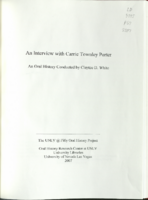
Transcript of interview with Carrie Townley Porter by Claytee D. White, February 7, 2006
Date
Archival Collection
Description
Text
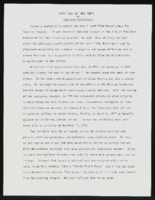
"They and We and They": article draft by Roosevelt Fitzgerald
Date
Archival Collection
Description
From the Roosevelt Fitzgerald Professional Papers (MS-01082) -- Drafts for the Las Vegas Sentinel Voice file. On Victor Hugo's Les Miserables and the NCAA.
Text
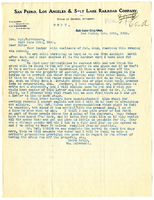
Letter from William McDermott to C.O. Whittemore, November 29, 1902
Date
Archival Collection
Description
Text
John Vellardita (Clark County Education Association) oral history interview conducted by Magdalena Martinez: transcript
Date
Archival Collection
Description
From the Lincy Institute "Perspectives from the COVID-19 Pandemic" Oral History Project (MS-01178) -- Education sector interviews file.
Text
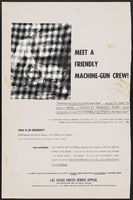
Las Vegas United Jewish Appeal "Meet A Friendly Machine-Gun Crew!" poster, 1953-1959
Date
Archival Collection
Description
Meet A Friendly Machine-Gun Crew! poster from the Las Vegas United Jewish Appeal asking for contributions to aid Jewish refugees. The text across the the front reads: "MEET A FRIENDLY MACHINE-GUN CREW! "America will lose the entire near East -- except for Israel! As long as ISRAEL is HELPED BY AMERICAN JEWRY, Israel can survive as our ONE FRIENDLY OUTPOST in the Near East!" - a statement made by General "Lightening Joe" Collins, former Chief of Staff, United States Army, at the Army and Navy Club, Washington, D.C., on July 1. 1958. TODAY IS AN EMERGENCY!! 80,000 persecuted Jewish refugees from Poland and Moslem lands must be helped to get to Israel - and quickly! Your contribution to the UNITED JEWISH APPEAL will help the emergency SPECIAL RESCUE FUND of $100,000,000 - and will help build up the newborn state of Israel - to remain strong - well-armed -- fiercely proud of its freedom - ready and able to remain YOUR ONE FRIENDLY OUTPOST IN A HOSTILE PART OF THE WORLD! -wouldn't you feel a little more secure with a friendly outpost guarding your freedom in the Near East? Las Vegas United Jewish Appeal Post Office Box 1981 Las Vegas, Nevada. Carl Cohen, chairman/Co-chairmen: Moe Dalitz and Jacob Kozloff/Nevada State Chairman: Edward Levinson"
Mixed Content

Dr. Deborah Kuhls oral history interview: transcript
Date
Archival Collection
Description
Oral history interview with Dr. Deborah Kuhls conducted by Barbara Tabach on December 29, 2017 for the Remembering 1 October Oral History Project. In this interview, doctor Deborah A. Kuhls describes the preparation and procedures implemented at the University Medical Center of Southern Nevada (UMC) during the night of the October 1, 2017 mass shooting in Las Vegas, Nevada. She describes her experiences from that night and into the next morning, starting from when the trauma center first learned about the shooting to when patients began arriving. She goes into detail on the hospital's Military-Civilian Trauma System Partnership, which allowed for the installation of a second trauma area to treat the large volume of patients. In addition to the events at the hospital, Kuhls talks about the flurry of activities during the week of the shooting, including interviews with various media, the statewide meeting for surgeons, fellows, and residents where "stop the bleed" training was provided, and general meetings with various government officials, including Donald Trump. Deborah Kuhls also discusses the emotional impact of the shooting and its aftermath as well as her goals for the future of trauma in the medical field.
Text
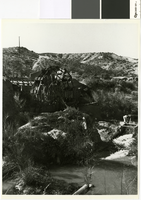
Photograph of waterwheel on the Muddy River near Logandale, Nevada, January 21, 1947
Date
Archival Collection
Description
38 foot waterwheel on the Muddy River near Logandale, Nevada.
Transcribed Notes: Bureau of Reclamation typed notes appended to back of photo: Boulder Canyon Project, Nevada Region 3 A 38-foot water wheel lifts water 30 feet from the Muddy River to irrigate a farm near Glendale, Nevada.
Image

Slide of the barged used in construction phase of Hoover Dam, Colorado River, January 10, 1932
Date
Archival Collection
Description
Image

Slide of boats used in construction phase of Hoover Dam, January 10, 1932
Date
Archival Collection
Description
Image
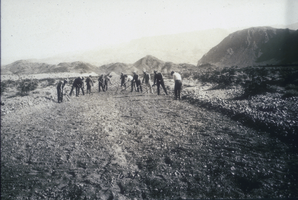
Slide of the construction phase of the Hoover Dam, November 19, 1931
Date
Archival Collection
Description
Image
